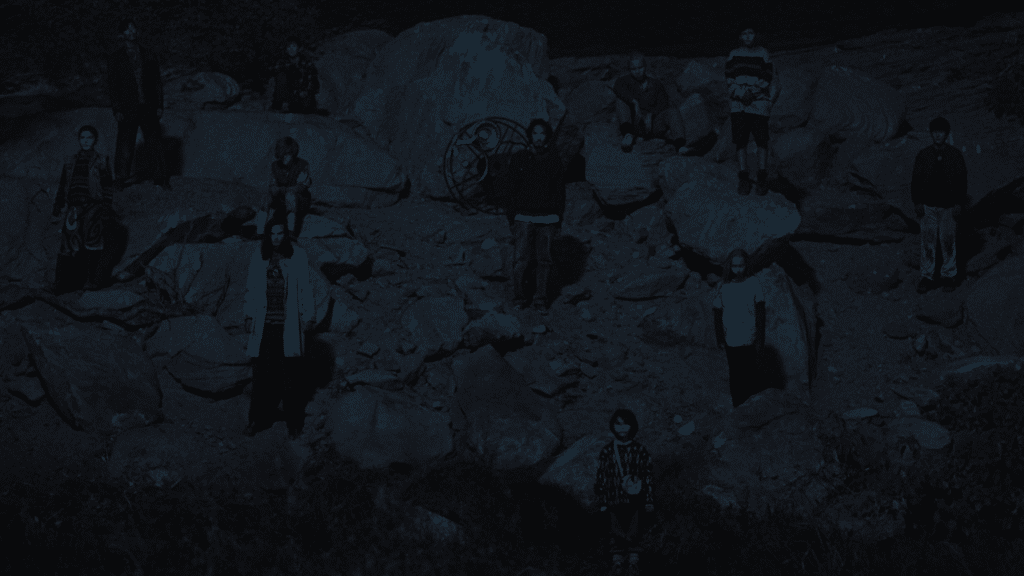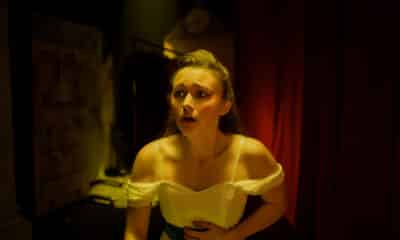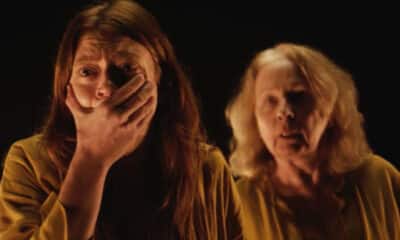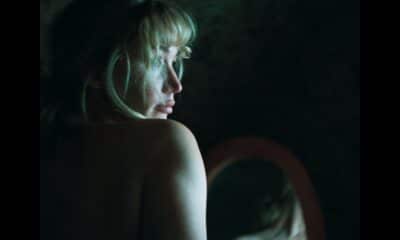It is hard to know exactly where to start, or how much to share about writer and director Barnaby Clay’s The Seeding. The film is a taut and traumatising whirl around a desert hellscape, one from which neither the viewer, nor protagonist can escape. A man (Scott Haze) gets lost in the desert and seeks sanctuary with a woman who resides in a deep canyon. The next day he awakens to find his route out destroyed and his escape guarded by a group of vicious boys. Whilst the situation is simple enough to explain, it becomes harder to articulate the horrors that follow; suffice to say that The Seeding is a movie not easily forgotten.

What makes The Seeding especially difficult to explain is that the characters are all nameless until the end credits. Only when the nightmare is over are names accredited to those on screen. The lack of identities disorientates the audience, keeping them in the same shoes as their nameless protagonist. With no name to put to the characters, they become associated with their on screen actions. Distilling them down works within the narrative landscape as The Seeding is a movie that relies on base instincts.
Whilst difficult to put your finger on, there is something severely uncomfortable about the entirety of The Seeding. This isn’t achieved through clever camerawork or trickery, it is merely omnipresent and, despite being impossible to pinpoint, impacts the viewer in a visceral way. There’s an innate malice that pervades, attacking the viewer on their most subconscious level. Even before the brutality of the boys who rule over the man’s new ‘home’ is revealed, the audience is rattled. Once the ferocity begins it evokes sheer dread. The Seeding’s nihilistic nature will make it a daunting prospect for all to endure in its entirety.
The cinematography nails the oppressive nature of the desert. From Scott Haze’s protagonist’s (named as Stone in the credits) first steps, the environment is communicated as hostile and uninviting. As far as the audience can see there are dunes of rusty, bleached sand, dehydrated greens and cloudless blue skies. Immediately Clay is signifying the dangers of the location, the dry, suffocating heat screaming off of the screen, and yet Stone marches on oblivious. Once trapped inside the walls of a sandy valley, the arid nature of the landscape continues to aid the piece, the grime of the heat staining both viewer and protagonist.
What really unsettles The Seeding though is the group that has captured Stone. Their method of entrapment, using one of their numbers as a ruse, is disturbing enough, but their lack of empathy and morals is what chills your blood. Stone is not alone in his confinement; a woman (Kate Lyn Sheil) lives in a house in the canyon. Her compliance with the situation in which she lives is a source of exasperation for Stone and the viewer. By letting them enact their feral desires she is condoning it, making her an accomplice and raising the ick factor of the film. The woman and the group of boys are a warped version of Wendy and the Lost Boys, one birthed straight out of a nightmare dimension.
That each boy is clad in finery and wigs hammers home the idea that they are playing being grown-ups with no comprehension of the implications of their actions. They are the definition of the feral child; guided purely by their psychological Id’s and with a lack of fully formed conscience they push the boundaries. The crimes committed in The Seeding would be unpleasant, but when enacted by children they become deplorable. As their twisted version of house continues, with Stone and the woman coerced into the roles of mum and dad, The Seeding somehow becomes even more confronting for the audience. This is a film that assaults the senses on a primal level and its content is sure to stir up controversy and conversation.
That The Seeding was created by the same mind that directed the wholesome Take That video for Rule the World is hard to reason. In The Seeding Barnaby Clay delves into some taboo arenas, thrusting them onto screen in a bold and challenging way. Those that accept the gauntlet of traumatic imagery will be forever changed as this is one story that clings to your very soul long after viewing.
The Seeding was reviewed at TriBeCa Film Festival 2023.
The Seeding
Kat Hughes
Summary
The Seeding presents a microcosm of brutality, highlighting the futility of mankind in a frank and disturbing way.
Kat Hughes is a UK born film critic and interviewer who has a passion for horror films. An editor for THN, Kat is also a Rotten Tomatoes Approved Critic. She has bylines with Dread Central, Arrow Video, Film Stories, and Certified Forgotten and has had essays published in home entertainment releases by Vinegar Syndrome, Arrow and Second Sight. When not writing about horror, Kat hosts micro podcast Movies with Mummy along with her six-year-old daughter.

Latest Posts
-


Film Reviews
/ 14 hours ago‘Fear Street: Prom Queen’ review: Dir. Matt Palmer (2025)
It has been four years since Leigh Janiak’s Fear Street trilogy took horror fans...
By Kat Hughes -


Film Reviews
/ 15 hours ago‘The Surrender’ review: Dir. Julia Max (2025)
As Julia Max’s debut feature, The Surrender, unfolds, the inspirations for the film become...
By Kat Hughes -


Film Trailers
/ 2 days agoFirst trailer for Darren Aronofsky’s ‘Caught Stealing’
Sony Pictures has released the debut trailer for Darren Aronofsky’s new film Caught Stealing,...
By Paul Heath -


Film Reviews
/ 3 days ago‘Lilo and Stitch’ review: Dir. Dean Fleischer Camp (2025)
Director Dean Fleischer Camp won audiences over with the fantastic Marcel the Shell with...
By Kat Hughes







